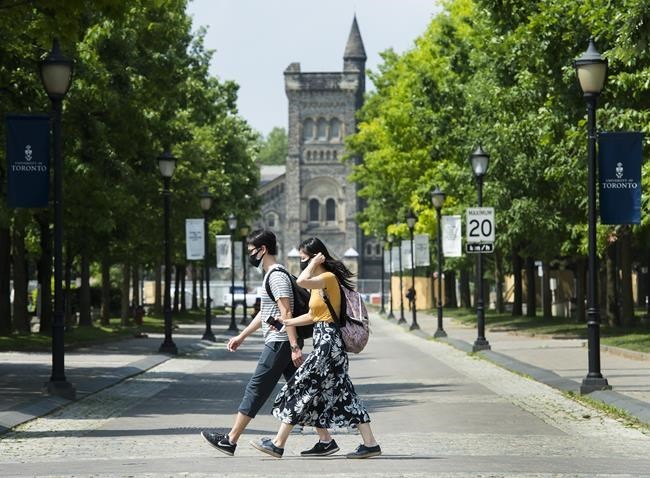Twenty-three-year-old Aidan D’Souza has been a student mentor in Toronto for the past four years while completing his studies part-time.
While working with Seneca College's mentor program SMILE (Student Mentoring in Life and Education), he helps students adjust to their first year of college. Part of that includes helping them find financial aid.
Students who receive scholarships get to spend more time focusing on school and less time working jobs to cover tuition and the cost of living, D’Souza said.
While many of these scholarships can seem competitive, students often rule themselves out and don’t bother applying.
"Many post-secondary schools have a lot of financial assistance available for students but students either don’t know about them or don’t take the time to fill out the application form," D’Souza said.
"Qualifications for financial assistance are not only based on grades or leadership activities but on financial need for students to help pay for their education," he added. "I have seen domestic students almost have their whole tuition paid for through financial assistance at post-secondary school."
Last year, D’Souza received help toward his own tuition with a $2,000 award from the 2021 Foresters Competitive Scholarship he won for the various volunteer roles he takes on.
Sandy Yong, author of "The Money Master," was able to pay more than half her university tuition with the 11 scholarships she earned between 2005 and 2009 totalling more than $10,000. She paid off the rest of her student loan balance shortly after graduating with the earnings she saved from jobs worked during the school year and summer months.
For each year of school, Yong would research scholarships offered by her school’s hospitality and tourism program and make a list of which ones she qualified for.
"Oftentimes I had to submit a short essay or written statement. It only took a few hours to apply and when I received on average $1,000, it was well worth my time," she said.
“If you are a student that gets onto the honour roll every year, you definitely have an advantage when applying for scholarships. But usually judges are looking for other things like extracurricular activities, work experience and your passion for the industry.”
Aside from looking into their own program's scholarship listings, Yong recommends students sign up for the Student Awards newsletter at studentawards.com.
"That way you can be the first to know about the scholarship application and have ample time to apply before the deadline. Honestly, the last thing you want is to find a scholarship where you meet all the criteria, only to find out you missed the boat," Yong said.
Yong also cites scholarshipscanada.com as a good resource.
Some major corporations also run contests, where a high grade point average (GPA) or a written essay is unlikely to be required. The competition can be tough though since it’s a random lottery, Yong added. Wireless carrier Fido, for example, currently is running a $2,500 student award contest that doesn’t require an essay or certain GPA.
When it comes to applying for scholarships, focus on quality and not quantity, Yong said.
"When you have a narrowed down list of the ones you believe you have a good chance of winning, then focus your attention on making your application stand out. Plus when you apply to many scholarships at once, it can get overwhelming and very time consuming."
And, don’t dismiss smaller scholarships, Yong said. Scholarships for $10,000 or more are no doubt appealing but competition can be tight.
An alternative, Young said, is to apply for several scholarships that pay $1,000 or $2,000 each since there might be a smaller amount of applicants.
"When you receive small awards, they can add up quickly."
This report by The Canadian Press was first published August 2, 2022.
Leah Golob, The Canadian Press


